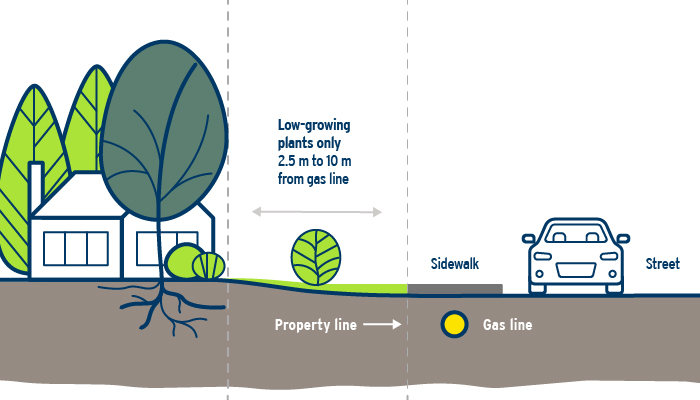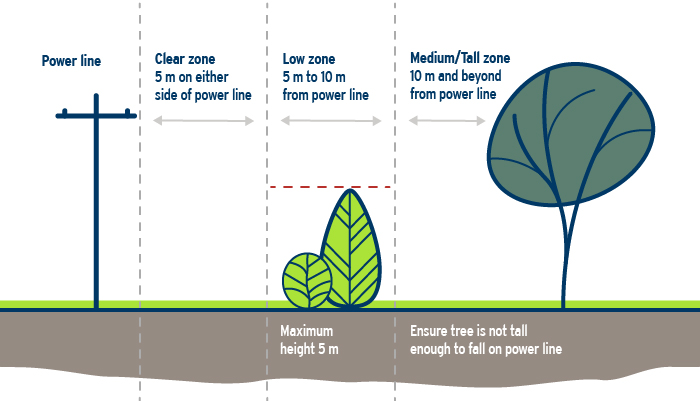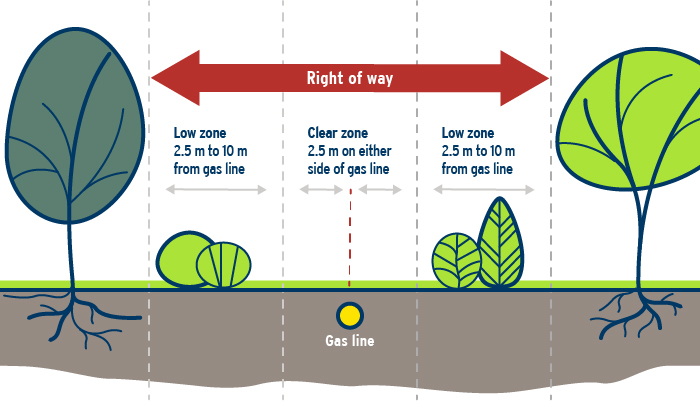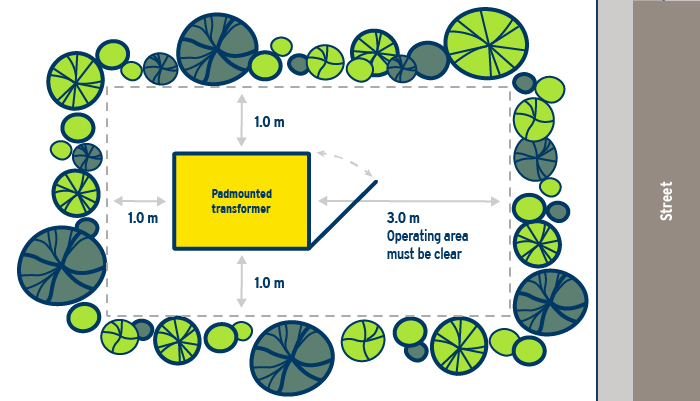Safe planting near utility equipment
We love trees as much as you do, but trees that come in contact with power lines, gas lines and other utility equipment can be a safety hazard. Follow our guidelines to ensure you’re planting the right tree in the right spot, and always click or call before you dig.
How to plant safely
If trees or shrubs become potential safety hazards, or interfere with access to our equipment, they may have to be trimmed, or even cut down, as part of our tree clearing for powerline and gas line maintenance program.
Choose the right tree for the right place

Your local nursery can provide advice on choosing the most appropriate tree or shrub. You’ll need to know how big the tree will be when it reaches full maturity: its height, branch span and root span.
Note: a tree’s roots can be wider than its branches. If a tree’s branches will be above a utility line then, its roots could grow into the utility line. Trees growing near utility lines can also block access to the utility for patrol, inspection and maintenance.
Plant a safe distance away
Plant trees a safe distance away from gas and electrical equipment, including gas lines, power lines and padmounted transformers. See each tab below for more details on exact distances for safe planting.
Overhead power lines

Clear zone: don’t plant anything within five metres on either side of a power line.
Low zone: from the outer edge of the clear zone to ten metres away, on either side of the power line, you can plant trees or shrubs that, when fully grown, grow to a height of five metres or less.
Medium/tall zone: from the outer edge of the low zone and beyond, you can plant trees of any height, as long as they won’t fall on a power line if blown over or uprooted.
No matter which zone you’re planting in, be sure that the tree and its branches will not reach into the clear zone when fully grown.
Note: Trees planted near higher voltage transmission lines require even greater clearances. Please contact us at 1-866-436-7847 to learn more about restrictions and permits needed for work near transmission lines.
Underground high pressure pipelines within a right of way

Clear zone: From 2.5 metres on either side of a gas line, you can plant low growing plants with a maximum height of 30 centimetres.
Low zone: from 2.5 metres to 10 metres away on either side of the gas line, you can plant items that will grow to a maximum height of 1.5 metres. Avoid planting hedges parallel to the gas line. Shrubs and hedges must be maintained by the property owner so that they do not grow taller than 1.5 metres, or they may be subject to removal.
Tall zone: starting at 10 metres away from the gas line and beyond, you can plant trees of any height.
Please visit our pipeline and right of way permits page for more information or to obtain a permit.
Padmounted transformers

When planting near a padmounted transformer, make sure there’s at least three metres of clearance in front of the padmounted transformer doors to ensure technicians can safely complete their work, whether it’s routine maintenance or responding to a power outage or emergency.
You also want to make sure your plant roots don’t become entangled with the underground wires. Padmounted transformers may have underground cables extending out about 0.3 to one metre (one to three feet) or more. Like all power lines, these ground wires should not be moved or damaged.
Digging around a padmounted transformer carelessly could cause not only service interruptions in your home or community but also severe or even fatal electric shock.